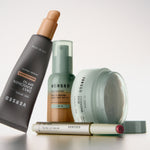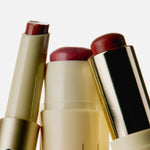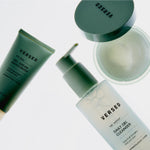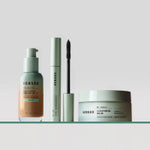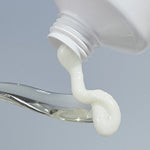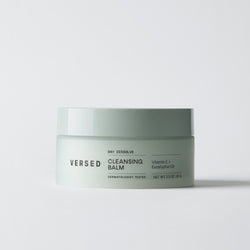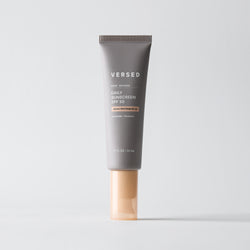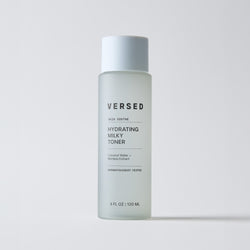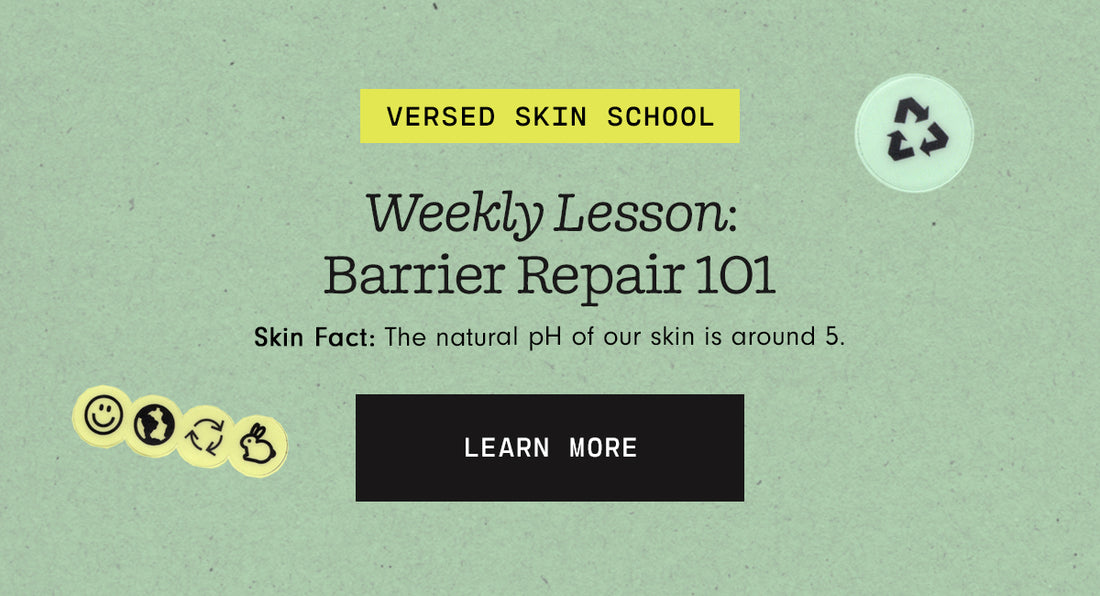If you’ve ever run across the terms ‘moisture barrier’, ‘barrier function’, or ‘acid mantle’ and been confused by them, consider these all-too-familiar skin situations. You swipe an AHA-filled toner across the skin and feel a tingling sensation, decide the product is too harsh, and toss it. Or maybe you fly on an airplane, feel your skin getting drier and drier the more miles you travel, and question whether the moisturizer you used that morning was powerful enough. You may simply be constantly fighting flakes, tackling a cycle of never-ending breakouts, or experiencing incessant skin irritation.
These are all common signs of a compromised moisture barrier, a seriously overlooked concept that’s the catalyst for many of our biggest skincare concerns (and one that may cause you to mistakenly trash beneficial formulas). To better understand what a moisture barrier is and learn how to strengthen ours, we tapped Polina Lavrenova, Certified Acne Specialist and Licensed Esthetician.
What Is the Moisture Barrier?
Your moisture barrier (also known as ‘acid mantle’ for our fellow skincare aficionados) is the skin’s outermost layer. As you can probably imagine, its sole purpose is to ensure skin stays well, moisturized, but it also defends against intruders—bacteria, irritants, environmental stressors (a.k.a. pollution and inclement weather)—and helps maintain an optimal pH balance to keep skin healthy and happy.
You can picture your barrier like this: When you open a jar of moisturizer, there is often a removable liner protecting the goods inside. This liner does the same job your moisture barrier does, making sure none of the bad stuff gets in while maintaining the integrity of the formula.
What Does Skin's Moisture Barrier Do?
Three different parts make up the moisture barrier: the outer level cells (these are the ones you see when you look in the mirror), the lower level cells (which are hidden beneath the surface of your skin), and the intercellular lipids (sandwiched between the two, this is the most important piece of the puzzle). Lipids “hold your skin cells together to prevent microscopic cracks from forming that can, in turn, cause a damaged moisture barrier by a process called TEWL (transepidermal water loss)”, Polina explains. 
Without getting into the scientific details, know this: When your barrier is strong and functioning properly, your skin can pull moisture from the air around it. If microscopic cracks do appear, all of that water seeps out (a.k.a. TEWL) and the barrier is left damaged and unable to properly defend itself.
How Can You Tell If Your Skin's Moisture Barrier Is Damaged?
The obvious signs are results of that moisture loss: dryness, irritation, tightness, and visible flaking. However, according to Polina, “a damaged moisture barrier is the cause or contribution to acne and forms of dermatitis”, such as rosacea, psoriasis, and eczema. That’s because a compromised barrier is less able to protect the skin against bacteria and irritants that cause these types of inflammation and acne flare ups. If you experience any of the below, you may have a weakened barrier:
- Flakiness and peeling
- Increased sensitivity
- Redness
- Dryness, tightness, and itchiness
- Premature aging
- Inflammatory flare ups (eczema, psoriasis, rosacea)
- Breakouts and increased oil production
How to Support and Repair Skin's Barrier Function
If you believe your moisture barrier may need some repair, here are some actions you can take to get it back in top shape—besides, of course, investing in a trusty moisturizer. Just remember to be patient: It can take a few weeks, even a month, to restore a damaged barrier.
Keep Things Gentle
First things first, make sure you are avoiding harsh ingredients, artificial fragrance, and aren’t overdoing it on the chemical and physical exfoliants. “Excessive use of scrubs, acids, enzymes, and chemical peels” is what Polina commonly sees as a major contributor to a damaged barrier. Her recommendation? Keep it at 3-5 days per week for normal skin types, and only 1-3 days per week if you find your skin is more sensitive. You can also consider switching to something a bit more gentle, like our Overnight Facial.Note the Temperature
The climate (including the dry air that occurs during air travel), indoor heating and air conditioning systems, and even the temperature of water you use while cleansing all play a role when it comes to skin’s barrier function. Both hot and cold temperatures can dry out and dehydrate skin. Switch your skincare according to season, consider investing in a humidifier, and always cleanse with room temperature water to make sure you’re getting a deep cleanse that won’t impair barrier function.
Keep an Eye on pH
Using skincare that is too basic (has a high pH) can throw skin's pH off balance. Make sure your cleansers are soap-free or better yet, opt for a pH-balanced product like our Gentle Cycle Milky Cleanser (pH: 5.0 - 6.0) that keeps skin's acid mantle in check.
Use Ingredients for Barrier Repair
Give your skin some TLC with soothing, moisturizing, hydrating ingredients. If you’ve got a damaged barrier, look for the following on your skincare ingredient lists:
Pro-vitamin B5
Also known as panthenol, this ingredient helps prevent against TEWL. You can help prevent dehydration and a weakened moisture barrier by adding this ingredient to your routine via our Antioxidant Cleanser.
